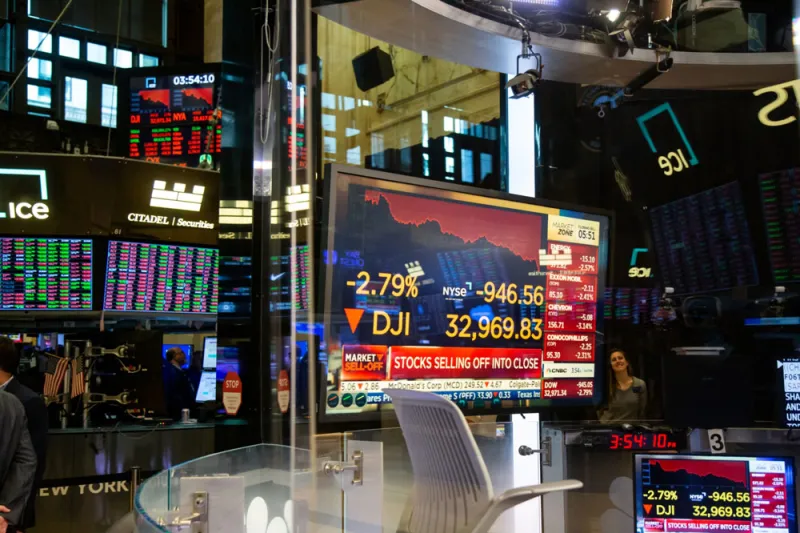Even with the huge declines in technology stocks, the pain is far from over for most allocators.
It’s well known that the S&P 500, the most popular index for passive strategies, is dominated by just a few tech juggernauts like Alphabet, Amazon, and Facebook, all of which have dropped significantly. But a deeper dive by research and data science firm Syntax shows that technology risk still makes up 42 percent of the benchmark. That’s only slightly less than the 47 percent technology represented in March 2000 — the peak of the dot-com bubble.
Investors generally use more common and less granular measures, which now show tech exposure in the S&P 500 hovering at approximately 22 percent, half the figure that Syntax has come up with. Syntax’s alternative methodology calculates tech exposure using more detailed information on the individual product lines and other services offered by companies. The firm warned investors about their higher-than-expected exposure to tech late last year.
Investors can blame their embrace of market-cap-weighted index funds for leaving them more exposed to tech and even less diversified than they think — all at a time when the market is at a significant turning point.
Simon Whitten, product strategist at Syntax, said that investors should keep the 42 percent figure in mind when they feel the temptation to buy into the current market’s weakness, thinking it’s only a temporary dip. It will fall more, he said.
Whitten added that’s it’s not surprising that public pension funds and other big investors bought into cap-weighted indexing since the approach is the cheapest way to get exposure to big swaths of the market. Unlike equal-weight or stratified indices, cap-weighted requires little work to keep a portfolio aligned with benchmarks.
The Syntax strategist said that to figure out what’s coming next, investors need to pay attention to what he believes is a regime shift — a return to rational investing where valuation matters. Given that technology is largely a growth play, he pointed to the performance of the Russell 1000 Growth index, which has been double the returns of value strategies over the last five years. While he can’t forecast how far growth will fall, he said, “this current market environment feels to me like a reversion back to rational investing.” When rationality takes hold, valuations once again become important. “Investors haven’t paid attention to valuations for five years,” he said.
Whitten said that the markets are fundamentally different than they were in March 2020, when that month’s massive decline spooked all investors and prompted the Federal Reserve to intervene. “This is a market correction that’s been left up to the markets,” Whitten said, acknowledging that it’s been a long time since the markets have been left to their own devices. But the Fed isn’t intervening this time and is carrying on with its intent to raise interest rates and tame inflation based on economic signals and its own timeline.
“This is a consensus correction. Nobody would look at it and say, ‘this is kind of crazy what’s happening in the markets. It feels rational.’ ”
With the Fed normalizing rates, tech stocks are very high risk. When rates rise faster than the market expects, long-dated earnings — growth, in other words — have to be ratcheted down. That’s because they get discounted much harder than value stocks.
“[The] risk is that you think you’re diversified, but you’re not,” Whitten said.







